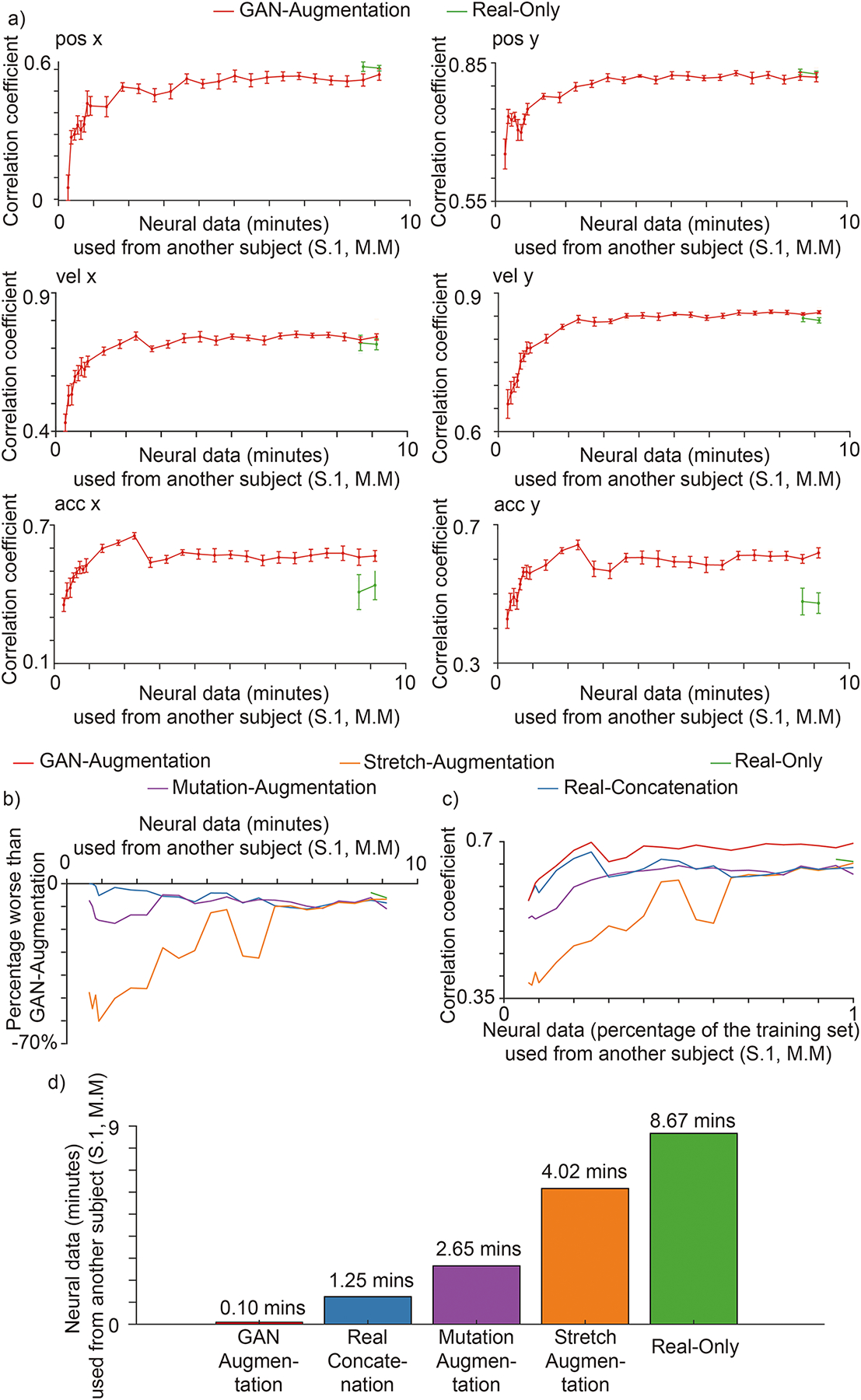Fig. 7 |. Cross-subject decoding.

Methods and their notations are the same as that of Fig. 6. a, Performances for each kinematic in 5 folds cross-validation. The horizontal axis is the number of minutes of neural data from Monkey M used. The vertical axis is the correlation coefficient (mean + / − S.D., n = 5 folds) between the decoded kinematics and real kinematics on an independent test set from the Monkey M. When the neural data from another subject is limited, synthesized spike trains that capture the neural attributes accelerate the cross-subject decoding performance. In addition, synthesized spike trains have learned generalizable information that can boost cross-subject decoding performance on acceleration over the best achievable performance. b, Average percentage performances worse than GAN-augmentation method. The horizontal axis is the number of minutes of neural data from the session one of Monkey M used. The vertical axis is the same as Fig. 6. b. c, Average performances presented similar to receiver operating characteristic (ROC) curve. The horizontal axis is the percentage of neural data from the training set of session one of Monkey M used. The vertical axis is the same as (a). d, Amount of additional neural data (S.1, M.M) needed for each method to achieve accuracy saturation (>=95% of the peak for real-only method training on all neural data from S.1, M.M).
